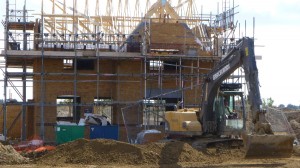Is the size, design and more importantly, build quality of new homes getting any better? Judging by the number of complaints they receive and various online comments the answer is a resounding NO! Only this week a Bellway Homes buyer was forced to move out of his house because it was declared structurally unsound after an incorrect (weak) mortar had been used. A Taylor Wimpey buyer could not move into his new home for TWO MONTHS because of the extent of snagging defects included potentially dangerous electrical installation. According to the unfortunate new home buyer, a Taylor Wimpey regional director even told him that “we’re here to deliver profit for our shareholders” adding: “we don’t build perfect houses”.
Whilst planning and building regulations stipulate minimum standards, it would appear that no house builder is prepared to go beyond the absolute minimum quality standards. When a new home buyer complains they are often referred to the NHBC’s booklet “A Consistent Approach To Finishes” and told that it is “within tolerance” The author has written to Persimmon’s Jeff Fairburn, and Taylor Wimpey’s Pete Redfern to ask what measures they are personally going implement improve the quality of their product. Neither has replied!
So with CEOs apparently only driven by profit and share prices, we thought it would be worth a look at examining whether those who are in charge of Britain’s largest plc house builders are in fact, fit for purpose. It can be seen that with one exception, they have not had a University education. In addition, only three have any experience of actually managing a building site, two of these actually started their own companies!













